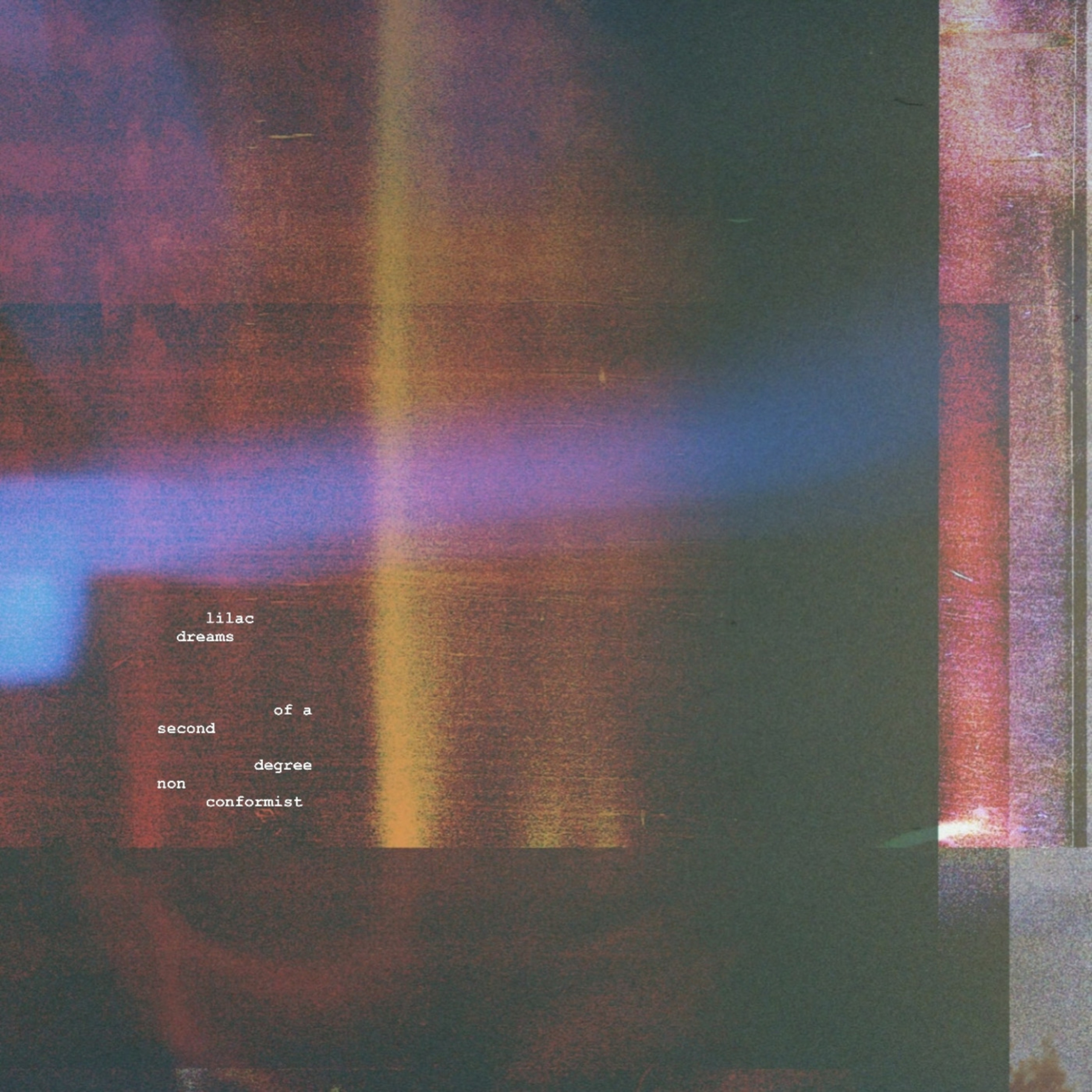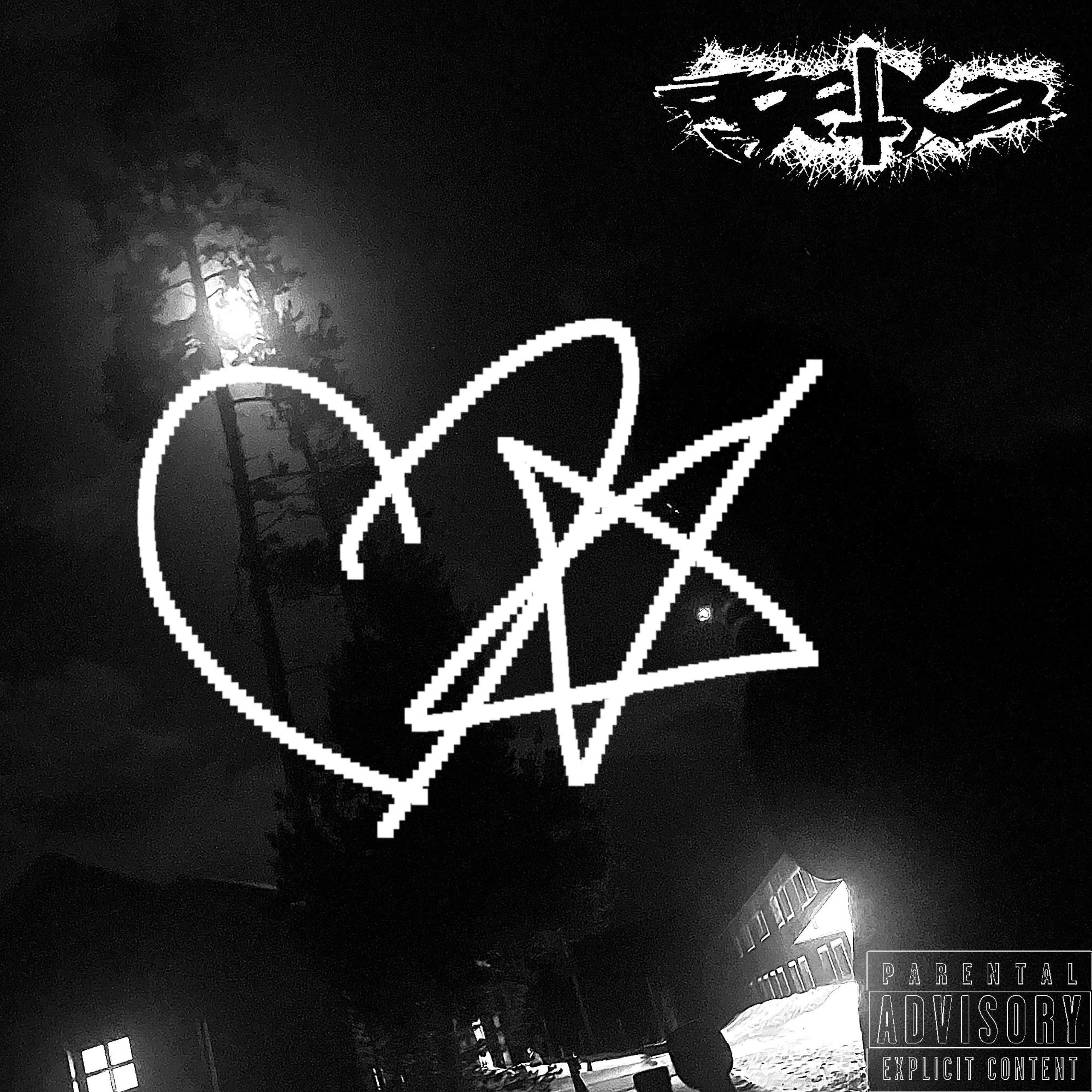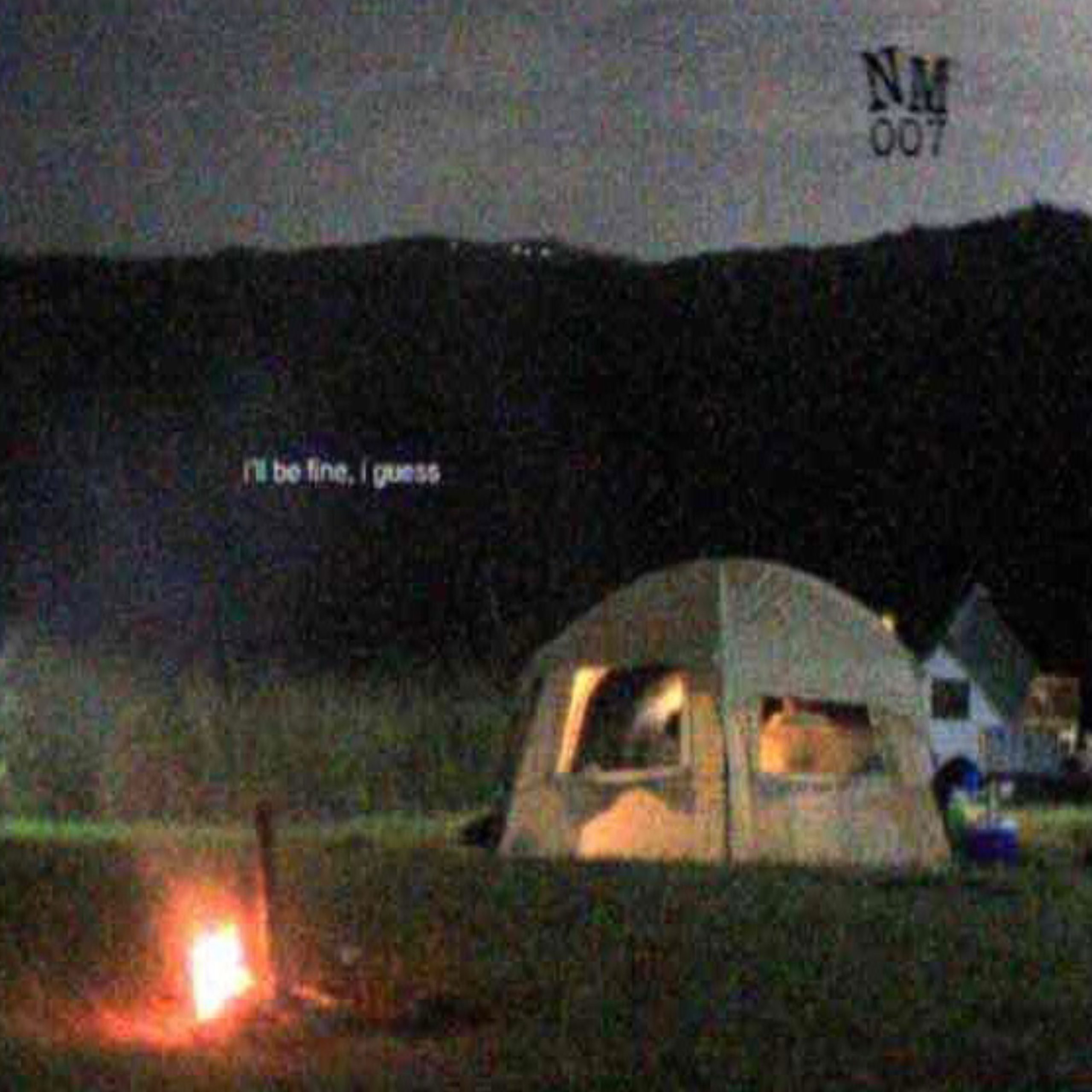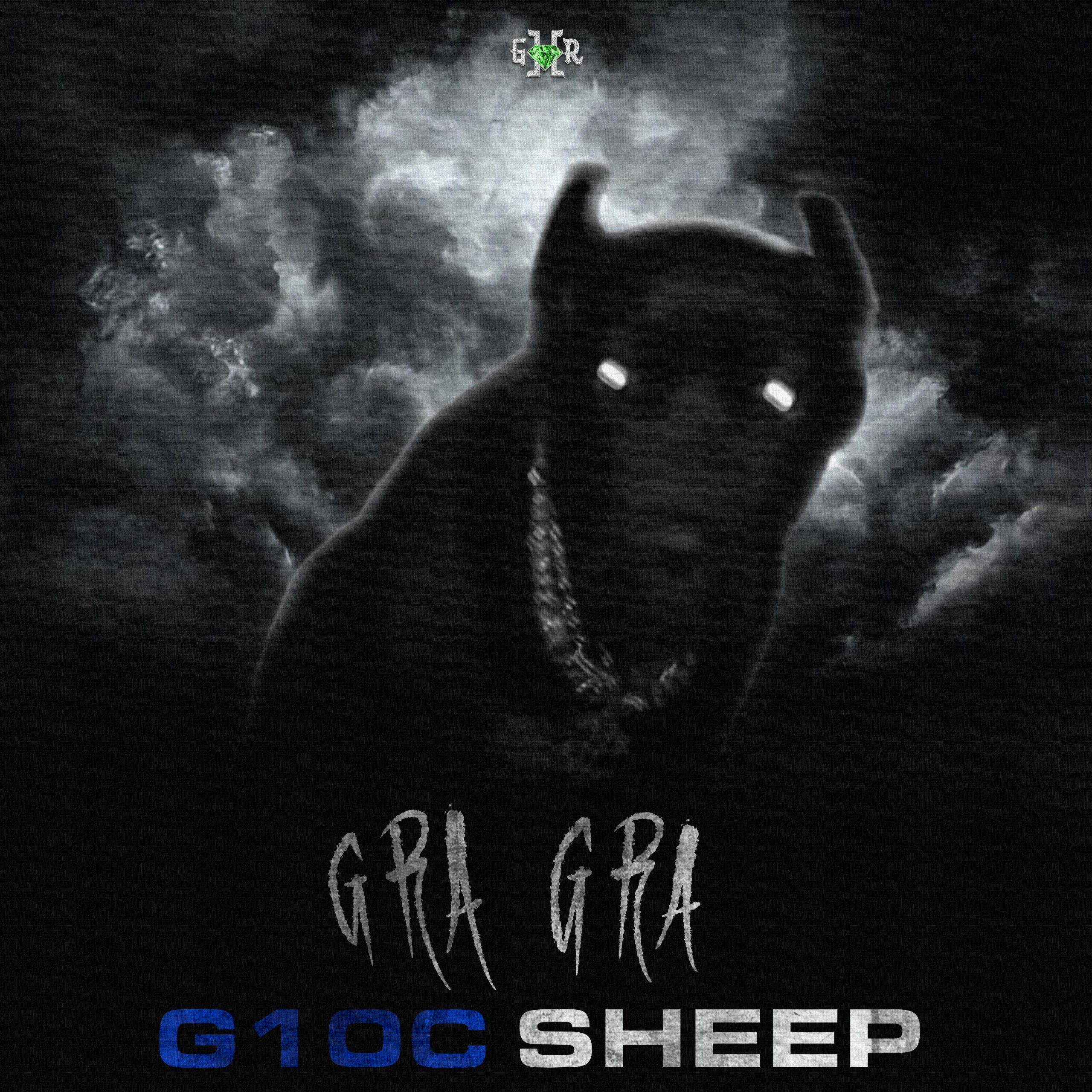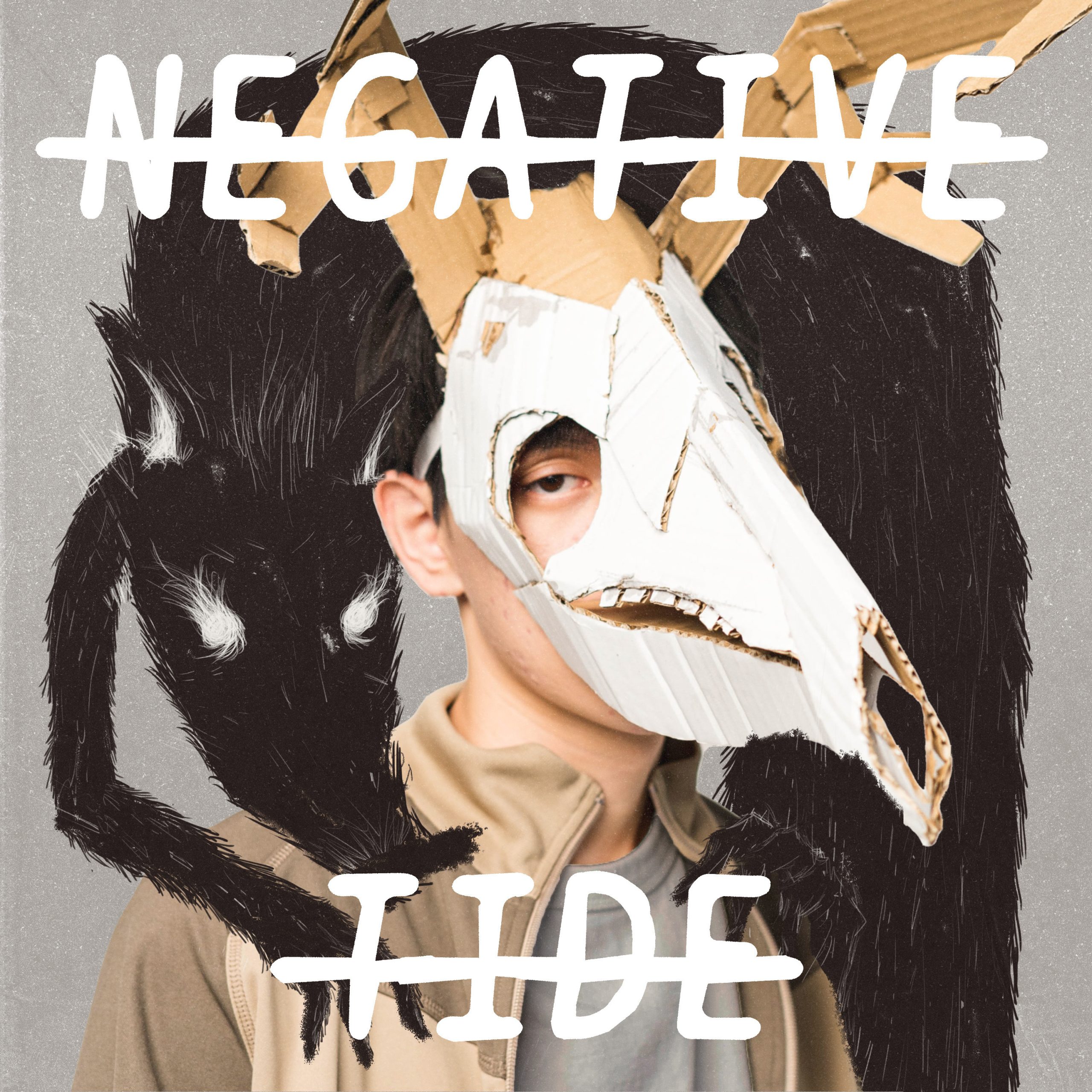Written by Nikolai Dineros There is this inherent pressure for concept albums to be atemporal. Perhaps rooted in misinterpretation, the idea of a concept album being similar to that of an odyssey revealing gospel truths of whatever musings its creator has willed into existence. What follows usually is a prophetic candor reaching apocalyptic scales. Dark Horse’s debut album ‘Spirituals’ challenged my idea of a concept album. Behind ‘Spirituals’ is an ensemble from two major players in the underground — and I don’t mean any local music scene. Renowned author and alternative culture connoisseur Karl De Mesa and Ronnel Vivo of the Vivo Brothers fame (known for Basalt Shrine, Dagtum, Sound Carpentry Records, atbp.), among others, join forces to create this brooding experimental doom folk project. The production of ‘Spirituals’ showcases the duo’s mastery of dread. Despite his proclivities and inclination for heavy sounds that demand your full attention, Vivo’s presence in ‘Spirituals’ is more understated than in his previous projects. This time, he plays a complementary role, taking charge in creating the needed ambience that gives De Mesa’s performance the urgency and biblical breadth fitting for an album that is more prose than a technical display of musical proficiency. The name Karl De Mesa is one linked to horror, more so the banality of it in the life of the everyday Filipino. Anyone familiar with his body of work would know his affliction for themes of family and resistance. The album’s single “Comrade Buddha” revisits this common Demesian trope, as explored in his earlier essays found in “Report from the Abyss.” More succinctly, a postmortem reflection of an ideal or a past, more formative self that bore witness to such tumultuous events. Binding spirituality and armed resistance and weaving it into a perturbed hymn is just the cherry on top, further displaying the masterful duo of De Mesa and Vivo. Meanwhile, “I Offer Pslams” finds the author recounting his memories in specific places, paying tribute to his mother in a solemn act of devotion. The album’s denouement, “Airwaves (A New Song of Darkness),” carries an oppressive air that leaves the listener in a claustrophobic state, as supplemented by Vivo’s scornful production work. These are just two examples of how De Mesa reveals himself in his writings; it is no surprise that these characteristics would bleed into his music. And not to mention, “I Offer Psalms” and “Comrade Buddha” are two of the highlights from this album. The other tracks, however, all follow the same pattern: tirades of cataclysmic scales interwoven in layers of cryptic wordplay – some are piercing, some barely scrape the epidermis. With all that being said, ‘Spirituals’ left me with more questions than answers. First, the album did not leave us with a satisfying conclusion to ascertain its connection to De Mesa’s past works, perhaps by design. What does the concept of an album say about the ever-changing state of the artist? Does it hold water when challenged by time and circumstance? ‘Spirituals’ approaches ideas in albums not like the be-all-end-all I may have mistaken them to be. Rather, it takes a larger-than-life concept (that is, De Mesa’s encyclopaedic knowledge of the systemic horrors he grew up with) and shrinks it to the size of a ball — a small yet dense ball. It might take me forever to parse every line, every subtext in Dark Horse’s debut album in connection to what I know of the artists involved in this project, how Vivo interpreted and translated these messages into sound, and how ideas can be tackled and revolved around by artists pursuing such ambitious endeavors. For now, I am satisfied with the knowledge that ideas are temporal. There are no hard-and-fast rules in creating art that stands the test of time — or even if they should. Whether ideas are reflective of the artist’s current state of mind, the connection ends the next time they hold the pen. Support the art and the artist: Spirituals by Dark Horse
Category: ALBUMS
ALBUM REVIEW: mako badco – songs from a time
Written by Elijah P. When the buzzing synths mimic analog guitar riffs or a drum machine slices through autotuned wails of teenage yearning, you know you’re inside mako badco’s world. On ‘songs from a time,’ that world feels like an endless internet feed—chaotic, messy, oddly moving. It’s the sound of a keyboard tumbling into infinite melodies, sometimes colliding, sometimes euphoric, always glued together by curiosity and instinct. The project first surfaced in the algorithmic haze of SoundCloud, buried among my recommendations, but what sets it apart is how addictive it becomes once you tune in. mako badco pulls from trance, indietronica, and experimental hip-hop in the vein of Evanora Unlimited, underscores, and deer park, yet reshapes those influences into something less polished but more personal. Across its quick 19 minutes, ‘songs from a time’ offers surprising range within its lo-fi haze. “someone real,” featuring ivy2k, pairs glitchy crooning with a cracked emotional pulse. “offline!” veers toward overt sentimentality, a yearning for connection in a world that never seems to log out. The highlight, “relieve me of…,” leans on low-pass breakbeats and submerged atmospherics, hitting hard without overstaying its welcome. Each track feels like a fragment pulled from an endless scroll, but together they form a snapshot of what it’s like to be young, wired-in, and searching. If the project falters, it’s in its looseness—songs sometimes drift without resolution, melodies threaten to evaporate before fully landing. But the imperfection is part of the charm. In between the buzzing synths and cracked vocals is a clear voice brimming with earnestness and restless ambition. It may not yet be fully formed, but ‘songs from a time’ makes one thing clear: mako badco has potential worth watching, grain, noise, and all. Support the art & the artist:
ALBUM REVIEW: The Braille Flowers – Lilac Dreams of a Second-Degree Non-Conformist
Written by Noelle Alarcon If you’ve ever spent even a fraction of a minute in Manila’s local underground, chances are you’ve already witnessed The Braille Flowers in action. Whether they’re offering stickers as they wade through the crowd, or creating sonic magic with their instruments under neon lights, there’s no doubt that the band’s members are a welcome presence in the tight-knit communities of artists and enthusiasts alike that run within the scene. These nights down under, usually characterized by a selection of beer bottles, sweaty moshpits, and yosi breaks in the cool evening air, breathe life into The Braille Flowers’ debut album: ‘Lilac Dreams of a Second-Degree Non-Conformist.’ Long as the title may be, it’s a name that only begins to make sense when you bask in that specific feeling, punctuated by the haze of the guitar pedals and the album’s constant desire to live in a moment that a pariah of society’s rigid conventions can find solace and romance in. ‘Lilac Dreams…’ is a release that mirrors its scene predecessors; The Braille Flowers’ ability to write about vulnerability in a manner that sounds like small talk about the weather is similar to the air of nihilism that echoes from the lyrics of The Geeks. On the other hand, the way they couple quirky male vocals with jittery, pop rock influenced drums is reminiscent of We Are Imaginary’s captivating, dreamlike musical style. The album’s singles show The Braille Flowers’ strengths; they’ve mastered the art of creating a cohesive album that still shows their variety and flexibility. “Lately” is a sweet train of thought that steadily grows louder as the infatuation continues to blossom. It’s a track that lends its attention to the high of being in love, not shying away from the intensity it brings as kick drum focused-fills gradually escalate the impact of its catchy, sugary guitar riff. “The Magician Was Shot Dead (Scarlet Rivers),” on the other hand, peeks out from the band’s “popgaze” box. The raspier vocals and whispers that accompany its palm-muted rise to the climax complement each other well. The sharper edge of ‘Lilac Dreams…’ contributes to its ability to invoke nostalgia, a callback to the preference of 2010s alternative music for squeaky clean, sharp production that’s tied altogether with the bow of a powerful rhythm section. The Braille Flowers’ debut is self-expression at its best; the concept even shines through in the serene instrumentals that serve as interludes for the next sessions of reflection and rumination. Perhaps it’s a release that focuses on the peace brought by honesty. But as a record that banks on the intimacy of being understood, it could probably flesh out the euphoria brought by such an experience through a wider range of sounds and expressions. At the end of the day, maybe the utilization of such a specific sound is what makes ‘Lilac Dreams of a Second-Degree Non-Conformist’ the record that it is-–a lush, fuzz-filled dream that everyone can hold up a mirror to. It’s a blueprint for every other non-conformist’s personal manifesto, ready to accompany you when you get feelings too difficult to put into words. Support the art & the artist:
ALBUM REVIEW: agatka – BLACK SPRING
Written by Lex Celera After a feature in Fax Gang and Parannoul’s collaborative album, and an appearance in Sining Shelter’s 2024 compilation tunes for a true home, Texas-based agatka’s sophomore album Black Spring arrives in the wake of what can be described as a tumultuous time for the artist. Presented as a “true documentary of all the things I’ve felt in the past year and a half” by agatka, Black Spring is a pulverizing blood rush straight to the dome when considered in its entirety. Across each track, the project warps in different tonal and sonic shifts and constantly dips itself into abrasion balanced out by tracks that allow you to catch your breath. “PISTOL ROUND,” “ROLL THE DICE, I LOSE AGAIN,” and “DOORDASH THERAPY” (in what appears to be in the same arrangement heard in tunes for a true home) barge in guns ablazing, simmer down, then pick up again at five tracks down; trap 808s, beheaded producer tags, Vocaloid sample flips, gutteral echoes, and high-energy grooves, deftly find their respective places in the album, alongside its shoutouts including Fax Gang, Andy Milonakis, and Counter Strike. In this regard, agatka falls in line alongside their contemporaries in placemaking their discography with internet artifacts, which serve as not just sonic decoration but also as referential material for the extremely online. Not only that, but framed within America’s sociopolitical landscape, Black Spring is also a direct response to and a first-person observation of America’s many failings, especially under its current administration, from a first-generation Filipino immigrant. “I FEEL FANTASTIC” depicts scenarios of violence against the far-right and a distrust of the system at play. Stitched by its commitment to verisimilitude, agatka has created a body of work that not only appears coherent in its accumulation of unapologetic angst and trauma across the span of it being produced, but condenses it into a vision that lands. I find myself returning to a number of tracks after initial full album listens: “CAMERON COUNTY COWBOYZ” emerges as a standout in its juxtaposition; wrapped around a silky smooth sample, stream-of-consciousness confessional lyrics end in a crescendo that pierces right through: “I can’t let go / I haunt myself / just like a ghost.” Meanwhile, “LORD FORGIVE ME” and its ruminations on existential and spiritual crises are on top of a thumping club rhythm, which comes across as catharsis in its three-minute runtime. Beyond these categorizations, Black Spring emerges as a body of work that could stand beyond its fixation on the present. Recorded across different locations in the United States over almost a year, the fifteen-track album comes across as an assemblage of raw moods and textures that carry the weight of its lyrics from the moment it was written down, distilled into a form that persists as something almost universal. Almost all of the lyrics of each track are written in the present tense, creating a sense of immediacy that, when addled with heavy production or laid bare, transports you to the same room where each track is made. Political statements and world-weary confessionals are rendered in the same way; one that can be seen as both tactile and tactless. Devoid of any need for metaphors, agatka’s “BLACK SPRING” serves as a teller of their own unfiltered truths. SUPPORT THE ART & THE ARTIST:
ALBUM REVIEW: unikko ijo – kung ipagdaramot ang nadarama, saan ba tayo pupunta?
Written by JK Caray With worn-out confessions scattered across his discography, unikko ijo’s brand of writing has earned him a special place among yearners who cover his songs on a dying digicam or create intricate lyric art that gets passed around their timeline. But after half a decade of writing unrequited ballads, the solo artist seems to have hit a checkpoint. His latest album entitled “kung ipagdaramot ang nadarama, saan ba tayo mapupunta?” shows a different resolve from the same artist who understands a little more about what it means to love. “malayo sa lupa ang bituin” starts the album at its lowest point, thematically. The blaring electronic pianos set an alluring backdrop alongside his defeated quips as unikko ijo contemplates whether it’s worth it to keep loving. Amidst its catchy melody that predates virality, the song also asks the most important question yet, “itatago nalang ba ang nadarama sa iyo?”. Throughout the album, he gradually builds up his answer. Halfway, songs like “kakaiba,” “matiwasay,” and “sapat nang hindi ka magsalita” fluffs up that familiar melding of Manila sound and lo-fi bedroom pop unikko ijo’s known for. The production is much more polished while retaining those intimate imperfections that drive home the sincerity in his words. As always, the solo artist is effective at building choruses that plant themselves in your eardrums. The simple song structure in the form of drum loops and hooky guitar riffs serves not only as a vessel but as the driving force for his talent at infiltrating your emotions with his intimacy and relatability. In “Hiwaga”, we get unikko ijo’s answer in the form of a question that bears the name of the album. “kung ipagdaramot ang nadarama, saan ba tayo pupunta?” shares the sentiment that fruitless longing gets us nowhere. Those unspoken words, stolen looks, and hidden letters all turn to rot on their own. In hoarding your feelings and creating your own stories, you’ve built an inescapable tower, becoming a reminder that self-contained devotion can be selfish. What good does our silent pining do if it’s not to be seen? To be felt? To be transformed into another thing? Where do these intense emotions linger if not become the catalyst of our self-destruction? It may sound harsh for some and inspiring for others, but this is a truth that most of us have forgotten. After all, what use does love have if not shared? The key to all this seems obvious. A line in “malayo sa lupa ang bituin” goes “babaguhin ko ang sarili ko”, a phrase that explains how the singer-songwriter sees the shift in his perspective that led to this album. At a glance, unikko ijo may seem like the type of artist who only has one gimmick, but this release reveals how he is capable of pushing the envelopes of his niche. “kung ipagdaramot” is the kind of album that emerges when an artist becomes aware of the clichés that surround his music and evolves along with it. SUPPORT THE ART & THE ARTIST:
ALBUM REVIEW: He Forgot He Died – I’ll Be Fine, I Guess
Written by Noelle Alarcon Surrender to the sound. That’s what He Forgot He Died, also known as Tadako, wants you to do. Proudly bearing the title of slowcore, the artist embraces the qualities confined within the genre. It takes from the definitions and descriptions, but “I’ll Be Fine, I Guess” is far from inauthentic. Running a little over 40 minutes, his musings find shelter and comfort in the classifications of his music. Like most songs under the slowcore umbrella, those that make up “I’ll Be Fine, I Guess” accompany and encourage introspection; the discovery of your innermost self. Tadako utilizes the thicker strings of the guitar to echo the weight of vulnerability. This release is as raw as it gets. In “night,” the fourth track of the album, his fingers sliding up and down the frets accompany his somber singing; slightly grating, yet comfortably a sign of his humanity. In “2:34 am,” the crickets and raindrops whisper along the sound of contemplation that drones on. The album’s greatest strength is its candidness; it’s like a friend confiding in you and opening up so you can confide in them too. Though most of the work consists of wandering, with wistful emotions speaking for themselves along the strings of the guitar, it has its moments of upbeatness. They do not reflect vibrance in the traditional sense, though. When there are drums, the ride cymbal and the kick drum are most audibly prominent. They sound more like a heartbeat drumming up during uncertainty; like how the artist admits he doesn’t know where to start in “time.” It’s a skill derived from noticing the littlest details that he’s able to communicate shared anxieties through sound itself. Tadako’s subdued vocals capture the intimacy of his work. His words are simple and read like diary entries; these thoughts don’t rise above the mix, like how vocals usually would. They float through the weighted soundscapes like thoughts at the most quiet hours of dawn; fleeting and indecipherable, honest and filled with regrets. “I’ll Be Fine I Guess” is so undeniably human that it’s heartbreaking, moving, to face the depths of life head on – ”tell mom I’m sorry,” he sings. “I’ll Be Fine, I Guess” explores what there is to do and who to become. It’s an album that knows what it is supposed to be by an artist who loyally sticks to the sound he wants to pursue. In a fast-paced world, people discourage staying in their own comfort zones. This album is a comfort zone worth revisiting and relistening to when things get heavy, especially for fellow advocates of the slowcore genre. The trademark simplicity it carries makes it a sonic shoulder to cry on; an effective set of tunes ready to serve as company. SUPPORT THE ART & THE ARTIST:
ALBUM REVIEW: Supafly — GRA GRA GC10SHEEP
Written by Elijah P. Greenhouse Records has never been short on rappers—the kind who call themselves “young stunnas” with a straight face, or the ones who treat head-to-toe blue as a genuine lifestyle rather than a fashion choice. Some are punchlines, others are bullet magnets, but Supafly? He’s built differently. Or at least that’s the idea. His latest album, GRA GRA GC10SHEEP, positions itself as a victory lap following 2022’s BAKASAKALI and his collaboration album with Because, but three years is a long time in rap, and Greenhouse’s rise—marked by block parties, barangay SK gigs, and a UP Fair slot—hasn’t necessarily sharpened Supafly’s edge. If anything, it’s left him leaning on a crew that’s more crutch than cavalry. Tracks like “LOOT” (featuring Hellmerry) and “Batista Bomb” stand out precisely because they’re among the few where Supafly doesn’t drown in guest verses. There’s a swagger here that doesn’t require a posse to prop it up—no filler, no dead space. But those moments are rare. Too often, GRA GRA GC10SHEEP feels like a relay race where nobody drops the baton, but nobody really sprints either. The album’s midsection is a revolving door of Greenhouse’s usual suspects: Gat Putch, Buddahbeads, Lexus, and Sica. Their verses don’t elevate each other; they congest the tracklisting from start to finish. On “AUTOFLY,” a hook that could’ve hit hard instead lands like an afterthought, buried under a testosterone pile-up. Worse, the production leans on references so blatant they border on parody. “SIZZURP” rides a Memphis bounce that’s less homage and more hand-me-down, while “BATISTA BOMB” nicks the skeletal menace of Travis Scott and Playboi Carti’s “FE!N” without adding anything new. When the album works, it’s despite itself. “LOOT,” “BALAGBAGAN,” and “DGHR” are chaotic in the best way; the kind of tracks where the energy feels live-wired, unpredictable, and hard-hitting production-wise. But this is supposed to be Supafly’s show, and GRA GRA GC10SHEEP rarely lets him own it. For a rapper who’s spent years carving out a name, this album oddly insists he’s just another face in the crowd. The irony? Greenhouse’s rise might’ve given him a bigger stage, but here, he’s still playing backup. Support the art and the artist:
ALBUM REVIEW: Michael Seyer – Boylife
Written by Faye Allego During the peak years of the Bedroom music era, Michael Seyer was indeed in his bedroom and making music described as “Beachy Stoner Rock,” Alternative Dreampop, and even Hypnagogic Pop. However, his body of work is far from your typical bedroom sound: his debut album, Ugly Boy, is like that one SB-129 episode from SpongeBob in the way that existential longing and loneliness are its primary themes; in “Bad Bonez”, Seyer reconstructs a warm, aching sorrow that would be heard instead of being seen in an Edvard Munch painting; and in A Good Fool, a newer, heavier wave of tenderness that was slightly hinted in his Nostalgia EP tugs your heartstrings with more depth than any of his previous work. In Boylife, Michael Seyer doesn’t offer a coming-of-age bedroom pop anthem or a grand expedition on the epic highs and lows of navigating masculinity in the Fil-Am diaspora. Released under his brand new, independent DIY label Seyerland, the new album shares the same warm, subtle hues from his previous work through his persistent use of slow-moving percussion, delay effects, a mushy vignette of white and brown noises, and his loosely subdued vocals — only that this time, Seyer’s lair of creativity sheds layers of existential tensions and packs in horizons of growth, reflection, and endless love. Taking inspiration from John Lennon’s Plastic Ono Band where Lennon randomly adds a Cookie Monster adlib in “Hold On” to make the song more fun, personal, and maybe even hint an inside joke that the listener can’t understand, Seyer surely reflects on these quirks: forming his own knicks and bolts to create an effect in a dozen tracks of pure sound and soul that is 100% his own unique story. It’s a risky yet intimate act of connection between the songwriter and the listener when the former writes music for their own reflections only. We see Seyer take that risk in Boylife, dissecting boyhood through the overarching theme of his art: nostalgia. His unfiltered essence then transforms into shared emotion, where tracks like “Folktales,” “Taylor,” and “I Want To Be Your Dog” become hymns, choruses, and letters that come from understanding and experiencing. The first three songs off of Boylife are a Dolly-effect zoom into where Michael Seyer is in his mind: he’s everywhere. The album begins as a sensory experience — it unfolds less like repetitive songs and more like a grounding technique for a young man realising that he has a place in this world, and now questions himself: “Is there something a man is supposed to become?” and even takes a jag at God to realise what love could mean in “Fiend,” where he sings “I need God, God’s not back.” With each passing track, being worried about Michael Seyer is a non-negotiable. “Don’t Worry” uses a descending melody as Seyer descends into a full-fledged crash-out– an honest yet cannon event for most people. Followed by a messy drum sequence in “Manlife,” the listener is then whiplashed at the very end as a nearly inaudible, muffled voice that is Seyer’s Father reaching out to him: “Hey Migs, it’s Dad, call me.” Perhaps it’s safe to say that sometimes, all it takes is a voice call from a loved one to snap back into the real world, or to look through a lens that isn’t so clouded with grain and distortion. Speaking of distortion, the latter end of Boylife shies away from the loudness and upbeat songs about growing pains and stays loyal to the Lennon-esque demos and outtakes approach, where the primary instrument is an acoustic guitar that is paired with timeless serenades of love poems and reassurances. The lines “We can be ghosts together/And we’ll disappear/ We can be ghosts together/ When there’s no one near” conclude and showcase Seyer’s most deeply quiet yet distilled form. He isn’t trying to resolve the chaos of Boyhood, he instead embraces it. He embraces the liminality, the softness, the ache. Michael Seyer gifts a scrapbook of memories through ambient noise, whispered admissions, squeaky yet steady vocals, certainly a Stratocaster of sorts, likely a second-hand synthesiser from the Glam Rock era, and lovesick lullabies that feel so intimate yet so profoundly universal. Michael Seyer doesn’t gift a resolution but more a revelation to himself: the revelation of becoming. Becoming a son, a boy, a man, an artist, a lover, a person, and all the feelings that come with that. Support the art and the artist:
ALBUM REVIEW: Fatigued – Negative Tide
Written by Adrian Jade Francisco The debut album from Fatigued arrives not with a bang, but with a whisper — yet its emotional resonance is anything but quiet. Nearly five years later, Emilio Gonzales’ solo project approaches to submerge us in the sentimental undercurrent of ‘Negative Tide’. Fatigued’s ten-track album is an introspective indie pop journey through uncertainty and quiet resilience, reflecting the experiences of the musician during the hectic process of ‘Negative Tide’. The opening track, “Oversized Words,” explores the struggle of articulating emotions and emotional disconnection in presence of hazy guitars, which is a prevalent theme throughout the release. A notable track “Temples” is a poignant commentary on the difficulty of self-improvement, expressing discontent with social expectations or conventions. Leaning on instrumentation, and the lyrics take a subtler, more restrained approach in “Take the Beating,” establishes the plea of emotional exile the best; the lines “Send me / To a home I used to be / Alone with my thoughts” echoes the theme of the album’s title and tone. What makes the track compelling is its stripped-back approach and emotional honesty holds back just enough to let the listener linger in the tension, the ache, and the silence of resignation. Fatigued channels his influences into something distinctively personal, crafting a sound that serves as a vessel for his ruminations. “Instant Disconnection” serves as a conclusion to its themes of inner turmoil and emotional exhaustion. While the album as a whole leans into a consistent mood of bleak introspection, it offers a subtle shift: not necessarily toward resolution, but toward resignation or quiet acceptance. The strength indeed lies in its thematic consistency and emotional honesty. Gonzales does not shy away from exploring discomfort and vulnerability. The lyrical quality is not overly abstract, making the weight of the tracks accessible and relatable to the listener. However, while the songs blend into one another, it lacks further dynamic shifts that could cover more emotional and sonic textures. The middle section of the album lacks space for experimentation; However, its sincerity and homage to the genre is still intact. ‘Negative Tide’ is a compelling indie pop monologue of emotional unrest. Fatigued’s sophomore album doesn’t just express vulnerability but inhabits it fully. The album has an unwavering commitment to thematic consistency and emotional transparency. Gonzales lives in a world where discomfort is explored with sincerity and grit, the band shows no signs of exhaustion — if anything Fatigued’s creative tide is still rising. For an album steeped in emotional unrest, it ends with remarkable clarity. Support the art and the artist:
ALBUM REVIEW: WAIIAN – BACKSHOTS
Written by Louis Pelingen There’s always this itching frustration that comes with Waiian’s overall projects, as there lingers a big potential for him to put out something striking that, unfortunately, has the habit of casually evading, where as much as he can exude this brand of charisma that’s effortless and easy to listen to, his records never take the next step of breaking out of its comfort zone. Relying upon the relaxed vibes to a fault that the overall solid set of production, writing, and performances only gets to wink out a distinct flair from time to time, most especially coming off of ‘WEYAAT?’ that manages to switch up sonic palettes and can compliment Waiian’s understated sense of wit and flow. His consistent characteristics keep the quality to a high floor, but not exactly a high ceiling. Fortunately, all of that eventually changes with his newest album, BACKSHOTS. Continuing on keeping the record just as brief as his last record, but there is an exceeding amount of surprising shift towards the overall presentation of this ridiculously titled album – bringing out all sorts of looser expressions and larger-than-life beats that allow Waiian to be at his most energetic, humorous, and just having so much fun in his rapping and singing abilities. Now that it is also paired with melodies and instrumentation that has so much light, yet bouncy flair, it only adds so much for these brisk songs to just flex with memorable moments, like the buzzy synths and pumping baile funk style beat on “MALAKING BIRD” which elevates Waiian’s prideful delivery even further, the soft synth chords amidst nimble bass grooves of “MAN IN THE MIRROR”, the lighter acoustics that twiddles around Waiian’s softer singing on “LOSE MY NUMBER”, the lowkey groove that gives Waiian and Nicole Anjela’s vocal chemistry to brush up well on “SOFTIE”, the whirring bass and sharper drums of “MOTIVATIONAL QUOTES”, the playful synths and drums that add to Waiian’s overblown attitude and ridiculous ad-libs on “ASAN NA SI…”, and the buoyant melodic chops and bubbly grooves of “SI LODS NA BAHALA” that overshadows just how quaintly mixed the guitar riffs sound. What’s also worth noting is just how Waiian’s overall writing bumps up considerably now that he has allowed his energy to be more carefree and bright, yet never exactly sacrificing the wit and humor that has been bubbling in a lot of his lyricism in his past records, just now amplified in clear-cut measure. This eventually reveals more depth to his bars, where he can utilize that earnestly goofy side to indeed make so much laughter with every one-liner he drops, but also emphasize the softness that men tend to shun in their lives – which tends to bring more harm to them than good – as well as critique said men for relying so much on their ego and swagger in the rap scene that doesn’t exactly come off as genuine, more so alienate themselves from connecting with people around them and stray away to making a stable career path that doesn’t have to rely upon riding their rap dreams. It’s the kind of insight that does come honestly from Waiian himself, where his self-awareness of being an artist also bleeds through his persona, unveiling more of his tender emotions as a result. With a tightly knit construction, a loosely snickering attitude, and hard bustling melodies, it’s without a doubt that Waiian finally manages to hit a grand slam with BACKSHOTS. Ripping open the laid-back persona he tends to chew upon and just letting his well-considered humorous wit be even more emphasized, all accompanied by his most refreshing production and beats to date. After swinging with various hits and misses in the past, this big bird has finally hit the sweet spot. SUPPORT THE ART AND THE ARTIST:


